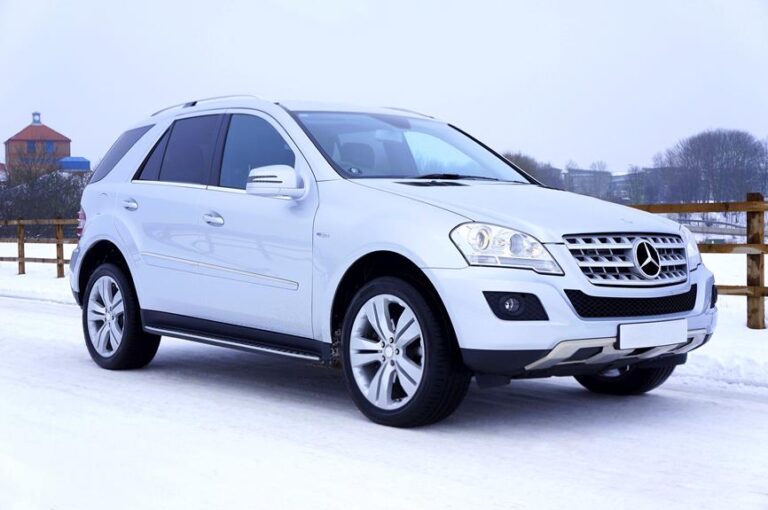Tire Size Guide: Finding the Perfect Fit
Looking to find the perfect fit for your tires? Wondering how to navigate the world of tire size terminology and make an informed decision? Look no further.
In this comprehensive guide, we will delve into the importance of choosing the right tire size, factors to consider, and how to read and interpret tire size numbers.
Avoid common mistakes and explore the benefits of plus-sizing as we uncover the effects of incorrect tire size on safety and performance.
Let's get started on finding your ideal tire size.
Key Takeaways
- Tire size directly affects handling, fuel efficiency, and safety.
- Choosing the right tire size enhances braking performance and reduces the risk of accidents.
- Factors to consider when selecting tire size include vehicle make and model, driving conditions, and load capacity.
- Understanding tire size numbers ensures proper tire size maintenance and fuel efficiency.
Understanding Tire Size Terminology
Understanding tire size terminology is crucial when it comes to purchasing the right tires for your vehicle. One of the key factors to consider is tire size conversion: standard to metric. Many tire manufacturers provide both standard and metric measurements for tire sizes. It is important to understand the conversion between the two systems to ensure compatibility with your vehicle.
Another factor to consider is debunking common myths about tire size. One common myth is that bigger tires always provide better performance. While larger tires may offer enhanced traction and a more aggressive appearance, they can also negatively impact fuel efficiency and overall handling. It is important to find the right balance between aesthetics and performance to ensure optimal driving experience.
Additionally, understanding the various components of tire size terminology is crucial. This includes the width, aspect ratio, and wheel diameter. The width refers to the measurement of the tire from sidewall to sidewall, the aspect ratio indicates the height of the tire sidewall as a percentage of the width, and the wheel diameter represents the size of the wheel in inches.
The Importance of Choosing the Right Tire Size
Selecting the appropriate tire size is essential for optimal vehicle performance, as it directly influences factors such as handling, fuel efficiency, and overall safety. The importance of choosing the right tire size cannot be overstated, as it impacts several aspects of a vehicle's performance and the driver's experience.
Here are four key ways in which tire size impacts your driving experience:
- Handling: The size of your tires affects how your vehicle handles corners, turns, and maneuverability. Properly sized tires provide better grip on the road, allowing for improved control and stability.
- Fuel Efficiency: The right tire size can contribute to better fuel efficiency. Larger tires can increase rolling resistance, resulting in decreased fuel economy. On the other hand, smaller tires may not provide enough traction, leading to excessive fuel consumption.
- Safety: Tire size plays a crucial role in overall safety. Properly sized tires ensure optimal contact patch with the road, enhancing braking performance and reducing the risk of hydroplaning. Incorrect tire size can compromise your vehicle's stability and increase the chances of accidents.
- Comfort: Tire size affects ride quality and comfort. Larger tires can provide a smoother and more comfortable ride by absorbing bumps and road imperfections. However, smaller tires may result in a harsher ride and increased road noise.
Factors to Consider When Selecting Tire Size
Considering the factors of vehicle make and model, driving conditions, and load capacity is crucial when determining the ideal tire size for optimal performance and safety on the road. The pros and cons of different tire sizes should be carefully evaluated to ensure the best fit for your specific needs.
When it comes to tire size, there are several factors to consider. Smaller tire sizes offer better maneuverability and improved acceleration, making them popular choices for sporty vehicles. However, they may sacrifice some comfort and stability, especially on rough or uneven surfaces. On the other hand, larger tire sizes provide enhanced stability, better grip, and a smoother ride. However, they can negatively impact fuel efficiency and may require more clearance space.
The impact of tire size on fuel efficiency is an important consideration. Larger tires have a larger contact patch with the road, resulting in increased rolling resistance and decreased fuel efficiency. Smaller tires, on the other hand, have less rolling resistance and can improve fuel economy. However, it is important to strike a balance, as excessively small tires can reduce stability and compromise safety.
How to Read and Interpret Tire Size Numbers
When it comes to reading and interpreting tire size numbers, it's important to understand the various specifications they represent.
The first number indicates the tire width in millimeters, while the second number denotes the tire's aspect ratio.
The letter following the numbers indicates the tire construction type, and the final number represents the wheel diameter in inches.
Decoding Tire Size Numbers
I find it essential to understand the tire size numbers as they provide crucial information about the dimensions and specifications of a tire. By decoding these numbers, you can ensure proper tire size maintenance and also understand the impact of tire size on fuel efficiency.
Here is a breakdown of the tire size numbers and what they mean:
- Section Width: This is the measurement in millimeters of the tire's width from sidewall to sidewall when mounted on the recommended rim width.
- Aspect Ratio: This number indicates the tire's height in relation to its width. It is expressed as a percentage.
- Rim Diameter: This is the diameter of the rim on which the tire will be mounted, measured in inches.
- Load Index: This number specifies the maximum load capacity of the tire.
Understanding these tire size numbers will help you choose the right tire for your vehicle and ensure optimal performance and fuel efficiency.
Understanding Tire Size Specifications
To ensure proper tire selection, it is crucial to understand tire size specifications and how to accurately read and interpret the tire size numbers. One important aspect of tire size specifications is tire size conversions. This refers to the process of converting tire sizes from one measurement system to another. For example, converting from metric to inch measurements. Another key consideration when choosing the right tire is the tire width. The tire width is the measurement of the tire's widest point from sidewall to sidewall. It is usually expressed in millimeters. To help you better understand tire size specifications and make the right choice, refer to the table below:
| Tire Size | Metric Size | Rim Diameter (inches) | Tire Width (mm) |
|---|---|---|---|
| 205/55R16 | 205 | 16 | 55 |
| 225/50R17 | 225 | 17 | 50 |
| 245/45R18 | 245 | 18 | 45 |
| 265/40R19 | 265 | 19 | 40 |
Common Tire Size Mistakes to Avoid
When it comes to choosing the right tire size for your vehicle, there are several common mistakes that should be avoided.
One of the most common misconceptions is assuming that all tires of the same size will fit your car. However, it is crucial to consider the specific requirements and recommendations provided by the vehicle manufacturer to ensure proper fitment and performance.
Additionally, understanding the importance of proper tire size selection can help you enhance safety, improve fuel efficiency, and optimize your driving experience.
Common Sizing Misconceptions
One common sizing misconception in the tire industry is assuming that all tires of the same size will fit perfectly on any vehicle. In reality, there are several factors that need to be considered when selecting the right size tire for a particular vehicle. Here are four common misconceptions about tire sizing that consumers should be aware of:
- All tires of the same size are interchangeable: While two tires may have the same size markings, they may not have the same load-carrying capacity or speed rating. It is important to select tires that are suitable for the specific vehicle and its intended use.
- Plus-sizing is always better: Plus-sizing refers to fitting larger diameter wheels and tires to a vehicle. While this can enhance the appearance and handling of the vehicle, it can also negatively impact ride quality and increase the risk of damage to the wheels and suspension components.
- All-season tires are suitable for all weather conditions: While all-season tires are designed to provide adequate performance in a variety of conditions, they may not offer the same level of traction and handling as dedicated winter tires in snowy or icy conditions.
- Treadwear rating is the sole indicator of tire longevity: While the treadwear rating is an important factor to consider, it is not the only indicator of tire longevity. Factors such as driving habits, road conditions, and proper tire maintenance also play a role in determining the lifespan of a tire.
Proper Tire Size Selection
Three common mistakes to avoid when selecting the proper tire size for your vehicle include:
- Disregarding the manufacturer's recommendations.
- Failing to consider the specific load-carrying capacity requirements.
- Underestimating the potential impact on vehicle performance and safety.
When it comes to tire size conversion tips, it is crucial to follow the manufacturer's guidelines to ensure optimal performance and safety. Disregarding these recommendations can lead to problems such as decreased fuel efficiency, compromised handling, and even tire blowouts.
Additionally, it is important to consider the specific load-carrying capacity requirements of your vehicle. Choosing the right tire width is essential as it directly affects the vehicle's stability and handling.
Underestimating the potential impact on vehicle performance and safety can result in accidents and unnecessary maintenance expenses. Therefore, it is crucial to carefully select the proper tire size based on manufacturer recommendations and load-carrying capacity to ensure a smooth and safe driving experience.
Matching Tire Size to Vehicle Type
The appropriate tire size for a vehicle is crucial in ensuring optimal performance and safety. When it comes to off-road vehicles and luxury cars, finding the perfect fit becomes even more important. Here is a guide to help you select the right tire size for these specific vehicle types:
- Tire Size for Off-Road Vehicles:
- Off-road vehicles require tires that can handle rugged terrains and provide excellent traction. Consider the following factors:
- Larger Diameter: Opt for larger tire diameters to enhance ground clearance and improve off-road capabilities.
- Wider Width: Choose wider tires for better stability and increased grip on uneven surfaces.
- Aggressive Tread Pattern: Look for tires with deep, aggressive tread patterns that can handle mud, rocks, and other off-road obstacles.
- Reinforced Sidewalls: Reinforced sidewalls provide additional protection against punctures and damage.
- Tire Size for Luxury Cars:
- Luxury cars prioritize comfort, performance, and a smooth ride. Consider the following factors:
- Lower Profile: Opt for low-profile tires to enhance handling and improve responsiveness.
- Smaller Diameter: Choose smaller tire diameters to improve ride quality and reduce road noise.
- High-Speed Rating: Look for tires with a high-speed rating to match the performance capabilities of luxury cars.
- All-Season Tires: Consider all-season tires that offer a balance between comfort and performance in various weather conditions.
Plus-Sizing: Upgrading Your Tire Size
Plus-sizing allows for the upgrading of tire size, providing improved performance and aesthetics for your vehicle. By increasing the diameter of the wheel and using a lower aspect ratio tire, plus-sizing offers a range of benefits such as enhanced handling, improved traction, and a more aggressive look. Whether you're a car enthusiast looking to enhance your vehicle's performance or simply wanting to upgrade the appearance, plus-sizing is a popular option to consider.
To help you understand the options available, here is a table showcasing the benefits of plus-sizing:
| Benefits of Plus-Sizing |
|---|
| Improved handling |
| Enhanced traction |
| Better cornering |
| Increased stability |
| Enhanced aesthetics |
Upgrading your tire size through plus-sizing can significantly improve your driving experience. The larger contact patch between the tire and the road leads to improved grip and maneuverability, especially during cornering. This means better control and enhanced safety on the road. Additionally, the wider stance and larger wheels provide a more aggressive and sporty appearance, allowing you to showcase your personal style.
When considering plus-sizing, it is important to consult with a professional to ensure proper fitment and to avoid any negative impacts on your vehicle's performance. With the right guidance, plus-sizing can be a worthwhile investment that enhances both the performance and aesthetics of your vehicle.
Effects of Incorrect Tire Size on Safety and Performance
Using an incorrect tire size can have detrimental effects on both the safety and performance of your vehicle, compromising handling and traction. It is crucial to ensure that your tire size is compatible with your vehicle's specifications to maintain optimal performance and safety on the road.
Here are four key impacts of using an incorrect tire size:
- Handling: Incorrect tire size can negatively affect your vehicle's handling capabilities. Oversized tires can cause excessive rolling resistance, reducing steering response and making it harder to control the vehicle. Undersized tires, on the other hand, may result in poor stability and increased body roll during cornering.
- Traction: Tire size directly affects traction, especially in adverse weather conditions. Incorrect tire size can lead to reduced grip on the road, increasing the risk of skidding or sliding, particularly on wet or icy surfaces.
- Speedometer Accuracy: Using an incorrect tire size can affect the accuracy of your vehicle's speedometer. Larger tires can result in an overestimation of speed, while smaller tires can lead to an underestimation. This can potentially lead to speeding tickets or accidents due to misjudgment of speed.
- Fuel Efficiency: Incorrect tire size can also impact fuel efficiency. Oversized tires create more rolling resistance, requiring more power and fuel consumption. Undersized tires may cause the engine to work harder, resulting in increased fuel consumption as well.
How to Measure Your Current Tire Size
To measure your current tire size, start by locating the tire's sidewall. Look for a series of numbers and letters, such as P215/60R16.
The first letter, 'P', indicates the tire type, while the three-digit number represents the tire width in millimeters.
The two-digit number after the slash indicates the aspect ratio, or the sidewall height as a percentage of the width.
Finally, the last number represents the wheel diameter in inches.
Accurate Tire Size
When determining the accurate tire size for your vehicle, it is crucial to measure the current tire size with precision and accuracy. This ensures that you select the correct replacement tires that will fit your vehicle perfectly. To help you understand the process better, here are four important factors to consider:
- Sidewall Markings: Check the sidewall of your current tires for a series of numbers and letters. These markings indicate the tire size, aspect ratio, and rim diameter.
- Load Index and Speed Rating: These numbers and letters represent the maximum load capacity and speed that the tire can handle. It is important to match these ratings with the manufacturer's recommendations for your vehicle.
- Tire Size Conversion: If you are looking to convert your tire size from metric to standard or vice versa, use a tire size conversion chart to ensure accuracy.
- Consult with a Professional: If you are unsure about the accurate tire size for your vehicle, it is always a good idea to consult with a professional tire technician who can guide you through the process.
Measuring Techniques Explained
Several precise and reliable measuring techniques, such as manual caliper measurement and digital tread depth gauges, are explained in detail to effectively measure your current tire size. Accurate size measurement is crucial when it comes to finding the perfect fit for your vehicle.
Manual caliper measurement involves using a tool to measure the distance between the outer edges of the tire. This method provides a precise measurement, but it requires manual dexterity and attention to detail.
On the other hand, digital tread depth gauges offer a more user-friendly approach. These devices provide accurate measurements by simply placing them on the tread and reading the display. They eliminate the need for manual calculations and provide quick and reliable results.
Tire Size Conversion: Metric to Standard
The proper maintenance of a vehicle's tires, including tire size conversion from metric to standard, is crucial for optimal performance and safety. When it comes to tire size comparison, converting metric tire sizes can be a challenge for some individuals.
Here are four key points to consider when converting metric tire sizes to standard:
- Understanding the basics: The first step in converting metric tire sizes is to familiarize yourself with the basic components of a tire size, such as the width, aspect ratio, and rim diameter. These measurements are usually displayed on the sidewall of the tire.
- Conversion formula: To convert a metric tire size to a standard size, you can use a conversion formula. For example, if the metric tire size is 205/55R16, you can convert it to a standard size of 26.3 inches in diameter by using the following formula: (section width * aspect ratio / 100) * 2 + rim diameter.
- Consultation with experts: If you're unsure about the tire size conversion process, it's always a good idea to consult with tire experts or mechanics who can provide guidance and ensure accurate conversions.
- Considerations for safety and performance: When converting tire sizes, it's important to consider the impact on safety and performance. A properly fitted tire ensures optimal grip, handling, and braking capabilities, reducing the risk of accidents and improving overall vehicle performance.
Frequently Asked Questions
Can I Use a Smaller Tire Size Than What Is Recommended for My Vehicle?
Yes, it is possible to use a smaller tire size than what is recommended for your vehicle. However, it is important to consider the potential benefits and advantages of using smaller tires, such as improved fuel efficiency and a smoother ride.
What Is the Maximum Tire Size I Can Fit on My Vehicle Without Modifications?
The maximum tire size that can be fitted on a vehicle without modifications depends on various factors such as the vehicle's make and model, suspension setup, and wheel well clearance. It is important to consult the manufacturer's guidelines to ensure compatibility and safety.
How Do I Determine the Correct Tire Size for My Spare Tire?
To determine the correct tire size for your spare tire, consult your vehicle's owner's manual or the manufacturer's recommendations. Using the recommended tire size ensures optimal performance and safety in case of emergencies.
Can I Mix Different Tire Sizes on My Vehicle?
Mixing tire sizes on a vehicle can have both pros and cons. While it may offer more freedom in terms of tire brand choices, it can also affect handling and stability. It is important to consult with a professional to ensure proper fit and performance.
Is It Possible to Change My Tire Size Without Affecting My Vehicle's Speedometer Accuracy?
Changing tire size can have an impact on suspension and can potentially affect the accuracy of the vehicle's speedometer. It is important to consult with a professional to ensure proper fit and compatibility with the vehicle's systems.
Conclusion
In conclusion, selecting the right tire size is crucial for safety and performance. Understanding tire size terminology and knowing how to read and interpret tire size numbers are essential in making the correct choice.
Avoiding common tire size mistakes and considering factors such as the effects of incorrect sizing and the option of plus-sizing can further enhance your driving experience.
Remember, finding the perfect fit for your tires can truly elevate your journey to new heights.







